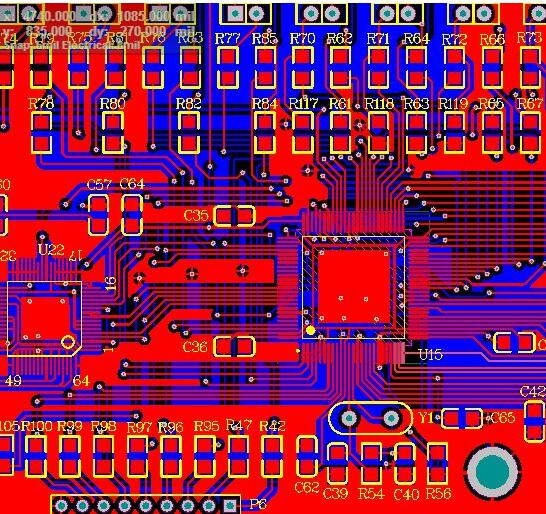Ten common problems in PCB design
1. Overlap of pads
1. The overlap of the pads (except the surface mount pads) means the overlap of the holes. During the drilling process, the drill bit will be broken due to multiple drilling in one place, resulting in damage to the holes.
2. Two holes in the multi-layer board overlap. For example, one hole is an isolation plate and the other hole is a connection plate (flower pad), so that the film will appear as an isolation plate after drawing, resulting in scrap.
Second, the abuse of the graphics layer
Some useless connections were made on some graphics layers. It was originally a four-layer board but with more than five layers of circuits designed, which caused misunderstandings.
2. It saves trouble when designing a graph. Take the Protel software as an example to draw the lines on each layer with the Board layer, and use the Board layer to mark the line. In this way, when the light drawing data is performed, because the Board layer is not selected,
Missing the connection and breaking the circuit, or short-circuiting due to the selection of the marking line of the Board layer, so the integrity and clarity of the graphics layer should be kept in the design.
3. Violation of conventional design, such as the component surface design on the Bottom layer and the soldering surface design on the Top, causing inconvenience.
Third, the random placement of characters

The SMD soldering pad of the character cover pad brings inconvenience to the continuity test of the printed board and the soldering of the components. )
.The character design is too small, which makes screen printing difficult, and too large will make the characters overlap and make it difficult to distinguish.
Fourth, the setting of the single-sided pad aperture
1. Single-sided pads are generally not drilled. If the drilling needs to be marked, the hole diameter should be designed to be zero. If the value is designed so that when the drilling data is generated, the hole coordinates appear at this position, and the
problem.
2. Single-sided pads such as drilling should be specially marked.
Five, use filler blocks to draw pads
Drawing pads with filler blocks can pass the DRC inspection when designing the circuit, but it is not good for processing. Therefore, the solder mask data cannot be directly generated by the similar pads. When the solder resist is applied, the filler block area will be
It is covered by solder resist, which makes it difficult to solder the device.
Sixth, the electrical ground layer is also a flower pad and a connection
Because the power supply is designed as a pattern pad, the ground layer is opposite to the image on the actual printed board. All the connections are isolated lines. The designer should be very clear about this. By the way here,
When drawing several sets of power supplies or ground isolation lines, be careful not to leave gaps, short-circuit the two sets of power supplies, or block the connected area (make one set of power supplies separate).
Seven, the processing level is not clearly defined' c
1. The single-sided board is designed on the TOP layer. If the front and back are not specified, the board may not be easy to be soldered with components installed.
2. For example, a four-layer board is designed with four layers of TOPmid1 and mid2 bottom, but it is not placed in this order during processing, which requires explanation.
8. There are too many filler blocks in the design or the filler blocks are filled with very thin lines
1. The gerber data is lost, and the gerber data is incomplete.
2. Because the filling blocks are drawn one by one with lines when processing the light drawing data, the amount of light drawing data generated is quite large, which increases the difficulty of data processing.
Nine, the surface mount device pad is too short
This is for continuity testing. For surface mount devices that are too dense, the distance between the two pins is quite small, and the pads are also quite thin. The test pins must be installed in a staggered position.
If the design of the pad is too short, although it will not affect the device installation, it will make the test pins not staggered.
10. The spacing of large-area grids is too small
The edges between the same lines that make up the large-area grid lines are too small (less than 0.3mm). In the manufacturing process of the printed board, the image transfer process will easily produce a lot of broken film attached to the board after the image is developed, causing the line to break.